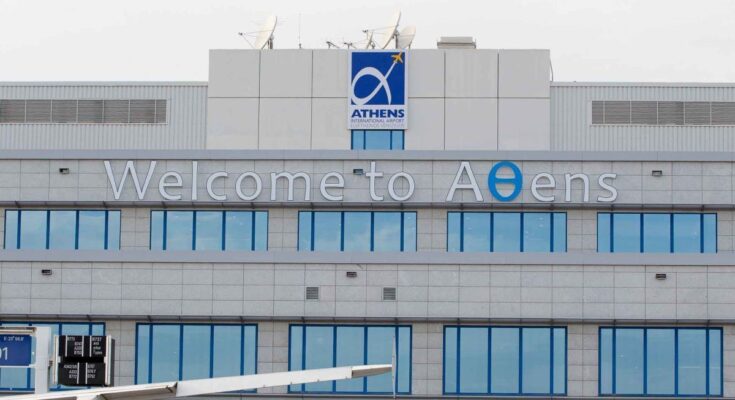
Athens International Airport (AIA) contributed 8.6 billion euros to the Greek economy in 2023 – equivalent to 3.8 percent of GDP – and supported over 214,000 jobs, according to a new study by the Foundation for Economic & Industrial Research (IOBE).
The findings were presented on Tuesday ahead of the ACI EUROPE Annual Congress & General Assembly 2025, which takes place this week in Athens.
The IOBE report breaks down the economic impact into three core areas: AIA’s operating ecosystem generated 3.3 billion euros; tourist spending by visitors arriving through AIA accounted for 5 billion euros; and airport-related transport services added another 314 million euros.

Photo © Greek Travel Pages (GTP)
“Athens Airport’s performance in the post-pandemic period is among the most dynamic in Europe,” said IOBE Director General Nikos Vettas. “Since 2014, passenger traffic has surged by 85 percent, and in 2023 alone, it exceeded pre-pandemic levels by 10 percent, reaching 28.2 million arrivals.”
Although AIA is not among Europe’s five largest airports, Vettas highlighted its rapid growth and increasingly strategic role in the Greek economy. He noted that the airport ecosystem includes airlines, commercial tenants, concessionaires, state services, and retail operators – all contributing directly and indirectly to national output.

Photo © Greek Travel Pages (GTP)
The IOBE study calculates that AIA’s operational impact alone amounts to 1.5 percent of national GDP. Of the 3.3 billion euros in total output, 1.657 billion euros is classified as direct impact, 793 million euros as indirect (via suppliers), and 818 million euros as induced (from related consumer spending). This activity supports approximately 50,000 jobs – 18,900 directly, 17,200 indirectly, and 13,500 via broader economic ripple effects. Notably, 4,700 direct jobs are based in the nearby Mesogeia region.

IOBE Director General Nikos Vettas. Photo © Greek Travel Pages (GTP)
Tax contributions are also significant, with 1.2 billion euros flowing to the Greek state, including 568 million euros in direct revenues.
The study highlights Attica as the primary beneficiary, with AIA’s operations accounting for 2.7 percent of the region’s GDP – around 2.8 billion euros.
Tourism is another major economic lever, the report underlines.

Photo © Greek Travel Pages (GTP)
Spending by international visitors arriving via AIA – excluding transportation costs – generated 5 billion euros, or 2.2 percent of national GDP. This supported an estimated 157,000 jobs and contributed 1.5 billion euros in additional public revenue.
The airport’s connectivity also plays a growing role, with transport-related activity contributing 314 million euros and 7,800 jobs.
Commenting on the strong performance in 2023, AIA CEO Yiannis Paraschis said the airport’s momentum carried into 2024 and continues into 2025.

Athens International Airport (AIA) CEO Yiannis Paraschis. Photo © Greek Travel Pages (GTP)
“Passenger traffic rose by 13.5 percent in 2024, and we’re seeing an additional 8 percent growth in the first half of 2025,” he noted. “We’re now entering a new phase, with a 1.3 billion euro investment program that will expand capacity to 40 million passengers annually.”
Paraschis highlighted that AIA has become much more than a transport hub.
“It is now a vital part of Athens’ identity and a key driver of national economic development,” he said.
Follow GTP Headlines on Google News to keep up to date with all the latest on tourism and travel in Greece.
Source link



